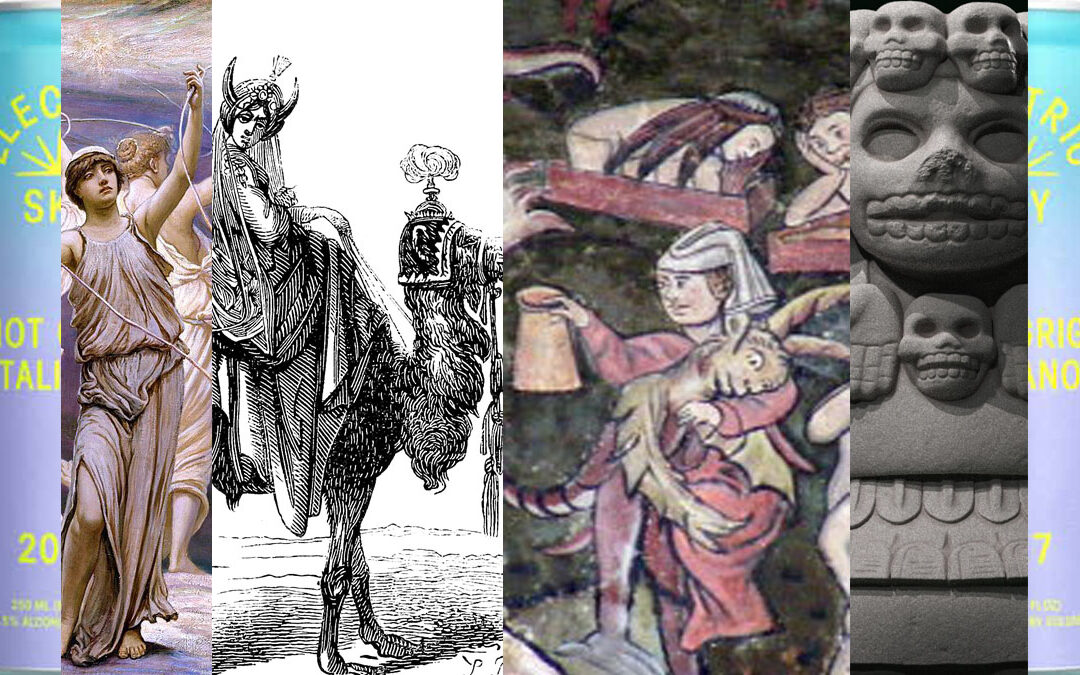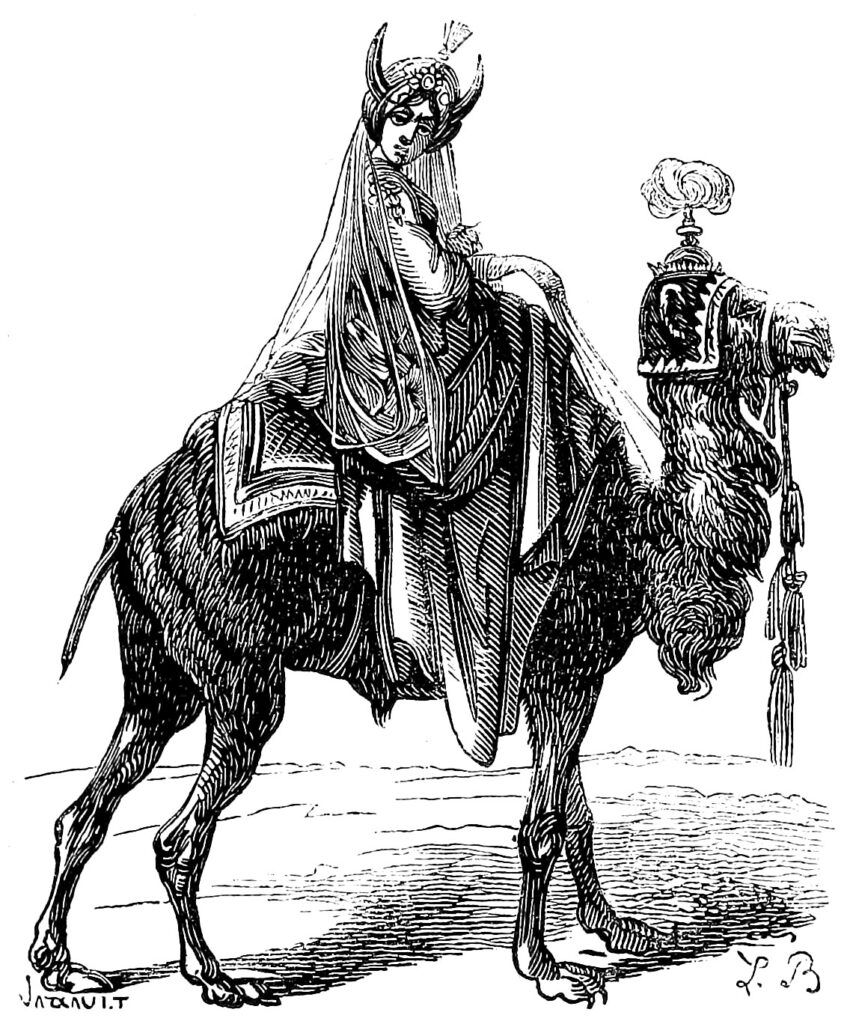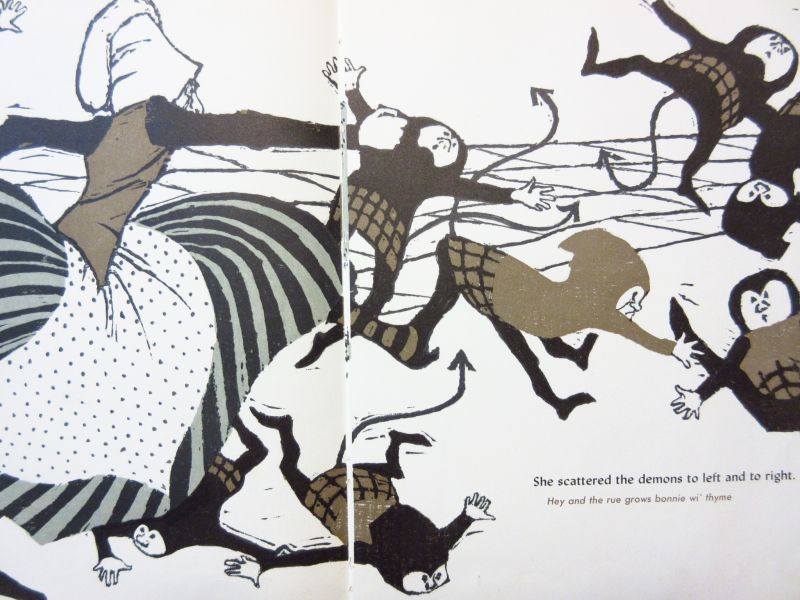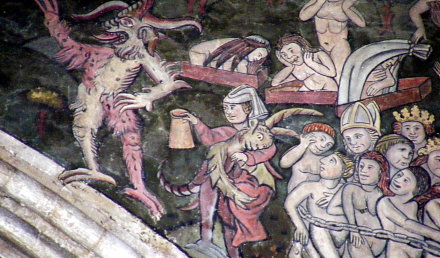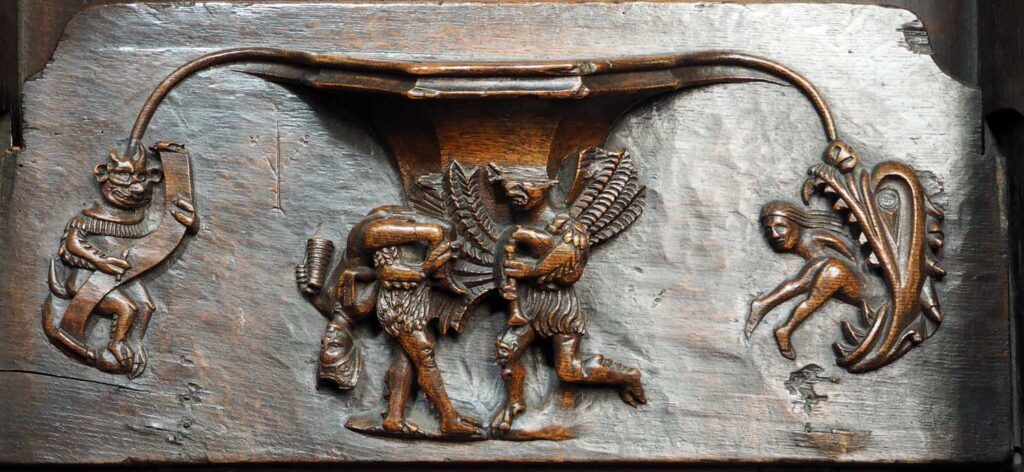
Kicking off a new miniseries, “The Ladies of Hell,” which looks to be a rich and possibly incomprehensible series of passages to explore. But first, drinks! And ice cream! And VUCA. There is no more Victoria this week, There is only Volatility, Uncertainty, Complexity, and Ambiguity. Jacob struggles to keep up. Today’s beverage? The Real Housewife, which is specifically designed to be thrown in someone’s face. Though it really sounds like a nice drink. Such a pity. And Jamin has a neat article about the Plutonium, though probably not the Plutonium you were thinking about, this is another Avernus-style hellmouth bubbling with carbon dioxide. The article’s a good read!
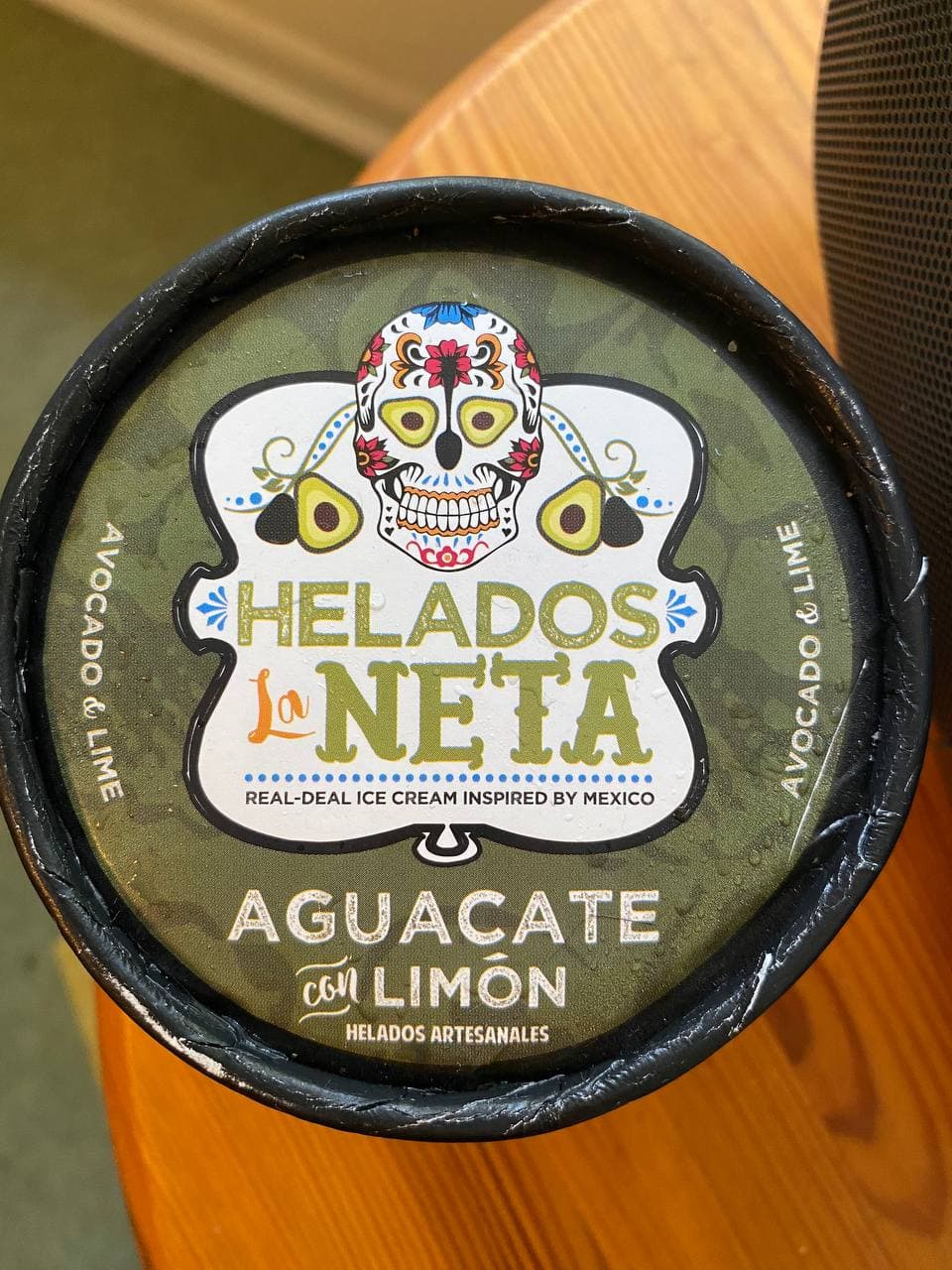


Who are the hosts’ favorite ladies of the inferno? Jacob is a fan of the Hazbin Hotel universe, particularly the insanely optimistic Charlie. Not entirely worksafe. Followed closely by the Hell’s Library series, with its strange cast of hell-adjacent bibliophiles. Victoria is very pro-Anya, the vengeance demon from Buffy the Vampire Slayer. She then goes on to reframe Billie Eilish’s “All The Good Girls Go To Hell” as the “She Works Hard For Her Money” of the realms below. Maybe not the best comparison? Too jarring?

Ladies of Hell (Citation needed)
Before we get too far down this road, A quick nod to some of the materials we used to build this one: Wikipedia’s article on “Sexuality in Christian Demonology” was one of our starting points, and it’s very dense and rather academic. And a huge debt of gratitude to Michelle Belanger for her Dictionary of Demons, which is about as authoritative as these things get, though it’s more approachable than the grimoires it draws from.
Gemory
Gemory, AKA Gremory, Gemon, Gemyem, is one of the 56-72 demons of the Goetia, and while all the Goetia are generally given the “he” pronoun, Gemory arguably presents as female more than the rest. As a pattern, demons that give their summoner powers over women appear as women, or at least as serpents with the heads of virgins (this raises the question, what would serpents with the heads of non-virgins look like?)
Gemory has powers of prophecy and treasure-finding, and given how close her name is to the word family of grimoire, gramarye, grammar, etc, Jacob wonders if she’s derived in part from the moon-goddess and general magickal goddess, Hecate. It might go a ways to explaining her pointy headdress.
Image at right from the 1860s Dictionary Infernal, which has some amazing illustrations. And Buer.
The Pleaides (and the Testament of Solomon)
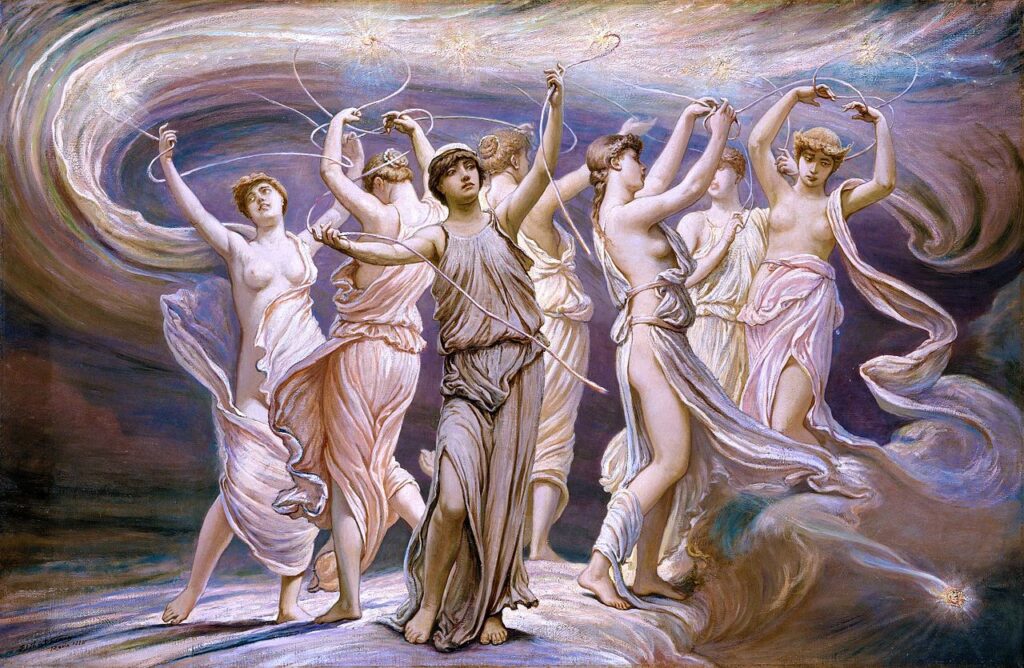
I want to pause for a moment for this amazing picture, The Pleiades (1885) by Elihu Vedder. Far from being a smudgy little version of the Big Dipper, the Pleiades have a long history of being trouble-makers, going back to Mesopotamia, where they were associated with a powerful group of demons called “The Seven” (or Sebettu.) Gina Konstantopoulos has made her 420-page thesis on this topic available online, so obviously there’s no real reason to spend time on something we’re all well familiar with. In Greek mythoogy, they seem like nice lesser goddesses who seem to only exist as mothers to various goddesses, mostly by way of Zeus, who is pretty awful.
The Pleiades feature in the “Testament of Solomon,” a piece of Solomonic fanfic from 100-200 AE. Read that one here. Jacob noted that the characters sounded kind of like the “unruly chaos beast” type character, and specifically Eris, the Goddess of Strife. Interestingly, the Dictionary of Deities and Demons of the Bible links them to a set of primeval, rebellious heroes, which does give them some of that “combat myth” feel. Hmm.
Victoria has a much more lucid and well-developed theory that they’re actually The Real Housewives of Assyria, which is not well-supported by scripture but is much more entertaining.
Jacob would like to apologize for confusing “Barachiel” (Blessed by god) and Baraquiel (angel of lightning). Particularly since Baraquiel is a fallen angel, one of the watchers, and it would be rude to cast aspersions on a fairly nice angel. “Benbarkiel” as it turns out was a role playing game character of his back in 2003.
Jacob briefly chokes on Victoria’s statement, “I am Error?” Which, it turns out, wasn’t a reference to a classic Legend of Zelda meme.

The Farmer’s Curst Wife
There’s a fun article, Spotify playlist, mini-history and general love letter to the Farmer’s Curst Wife on the “Sing Out!” folk music blog, and I think (says Jacob) that if I’d read this before I’d done my podcast research, I would have just plaigerized this article entirely, it’s quite good!
Broadly, this is the story of the wife of an old farmer, who’s tough as nails and meaner than the Devil himself–so mean that she gets sent back to Earth.
The story itself is very old…Robert Burns, 19th century, retells it in “The Carle of Kellyburn Braes,” it possibly went back to the Canterbury Tales in “The Merchant’s Tale,” and there’s an echo of it in the 6th century Hindi story anthology, The Panchatantra.
The Alewife
A huge thanks to the phemonenal Braciatrix blog, a huge cauldron of myth, recipes, and history devoted to brewing and alewives. “Rebellious alewives, heroic barmaids, renegade beer goddesses, and more inspiring brewsters than hops in a quadruple IPA. Beer history. About women.” After that, Theresa Vaughan’s “The Alewife: Changing Images and Bad Brews,”and Allison Murray’s “Alewives: Brewing Ale, Brewing Controversy” from “Women in Theology.”
Couldn’t find any official hot takes on this one, but Nanny Ogg must have been based on the Alewife. She’s dangerously jolly, a brewer of fine weapon-grade cider, a witch but not the curse-throwing kind, and she has an unpleasant black cat. She hasn’t married the devil, to the best of my knowledge, but she may have messed around with the Horned God in her long-ago childhood.
Word for the day: “misericord,” a support underneath a folding seat or pew that gives a bit of extra support to an old or infirm person who needed to stand in church. While these were hidden away, they were usually carved and ornate, and…kind of out of character! In Wikipedia’s gallery there’s misericords showing green men, a griffin that may have been the basis for the bird of same in Alice and Wonderland, and others. The “Misericords of St Laurence” shows a nice detail of the famous Dishonest Alewife carving.
I forget if I mentioned this or not in the podcast, but there’s an alternate version of the Testament of Nicodemus/Harrowing of Hell where Jesus comes down to hell and saves everyone…but an alewife. However, a demon offers to marry her, so there’s a happy ending. Sort of. – Jacob
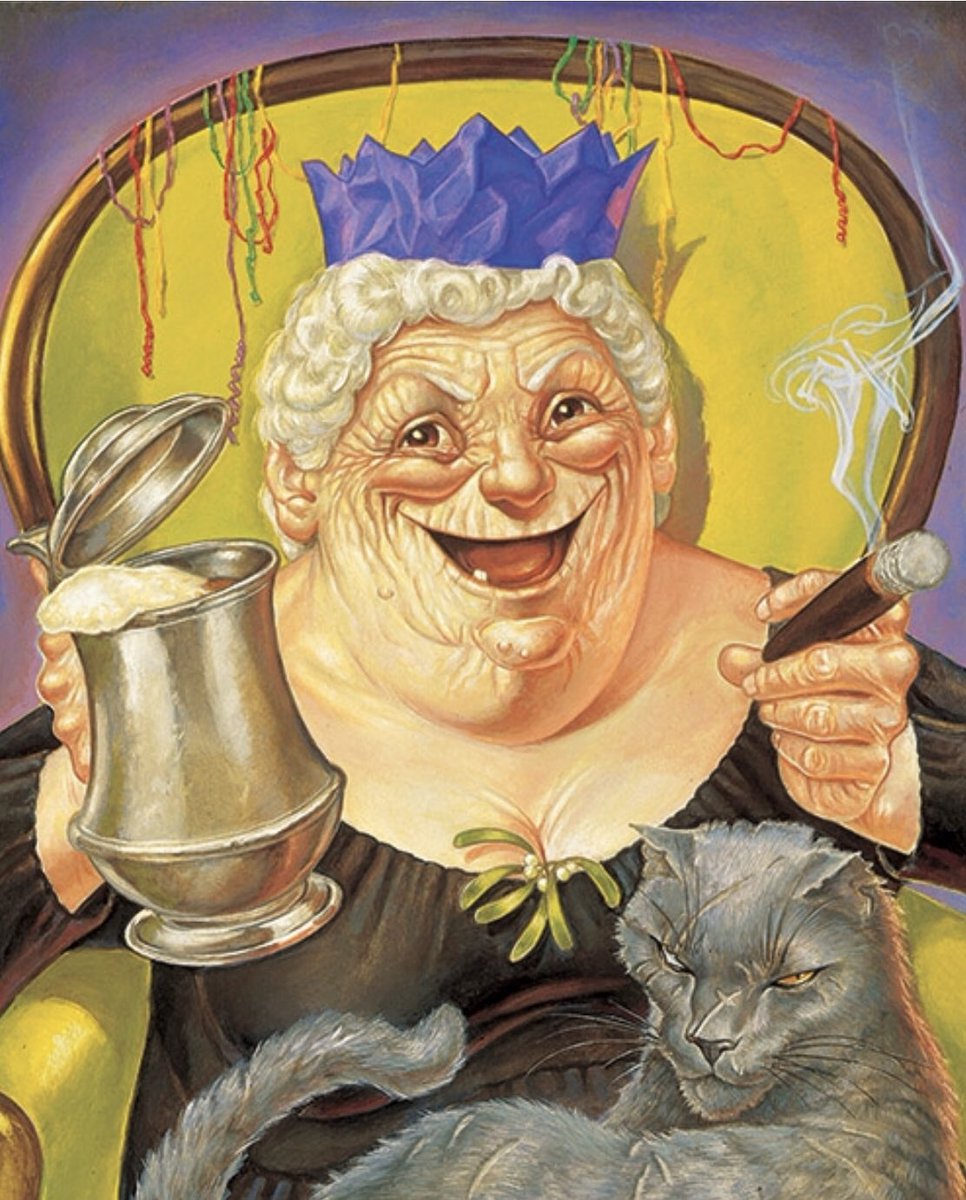
Nanny Ogg from Terry Pratchett’s “Diskworld” series, art by Phil Kidby, orderable as a festive christmas card! Below, Dishonest Alewife from “Misericords of St. Lawrence,” by Heyjude.
Mictēcacihuātl
Aztec goddess of the dead, or perhaps queen of the underworld, or maybe goddess of the bones of the dead? Generally shown flayed and skeletal, with huge jaws that swallow the stars during the day.
Overall…and kind of like Ereshkigal and Nergal in this respect…there’s more about her bony husband in folklore than about Mictecacuatl herself.
One interesting tradition – folks that were too poor to afford a funeral buried the bones of their ancestors under their house, which may have earned them the protection of Mictecacihuatl, She’s very tied up in the Dia de Muertos imagery. There’s a nice meditation on her on Mythcrafts, “She Swallows the Stars: The Day of the Dead.“
And, yes, indeed, The University of Texas Press has quite a number of books in their Precolumbian Studies department. It’s kind of amazing how…specific…a well-funded college’s publishing arm can get.
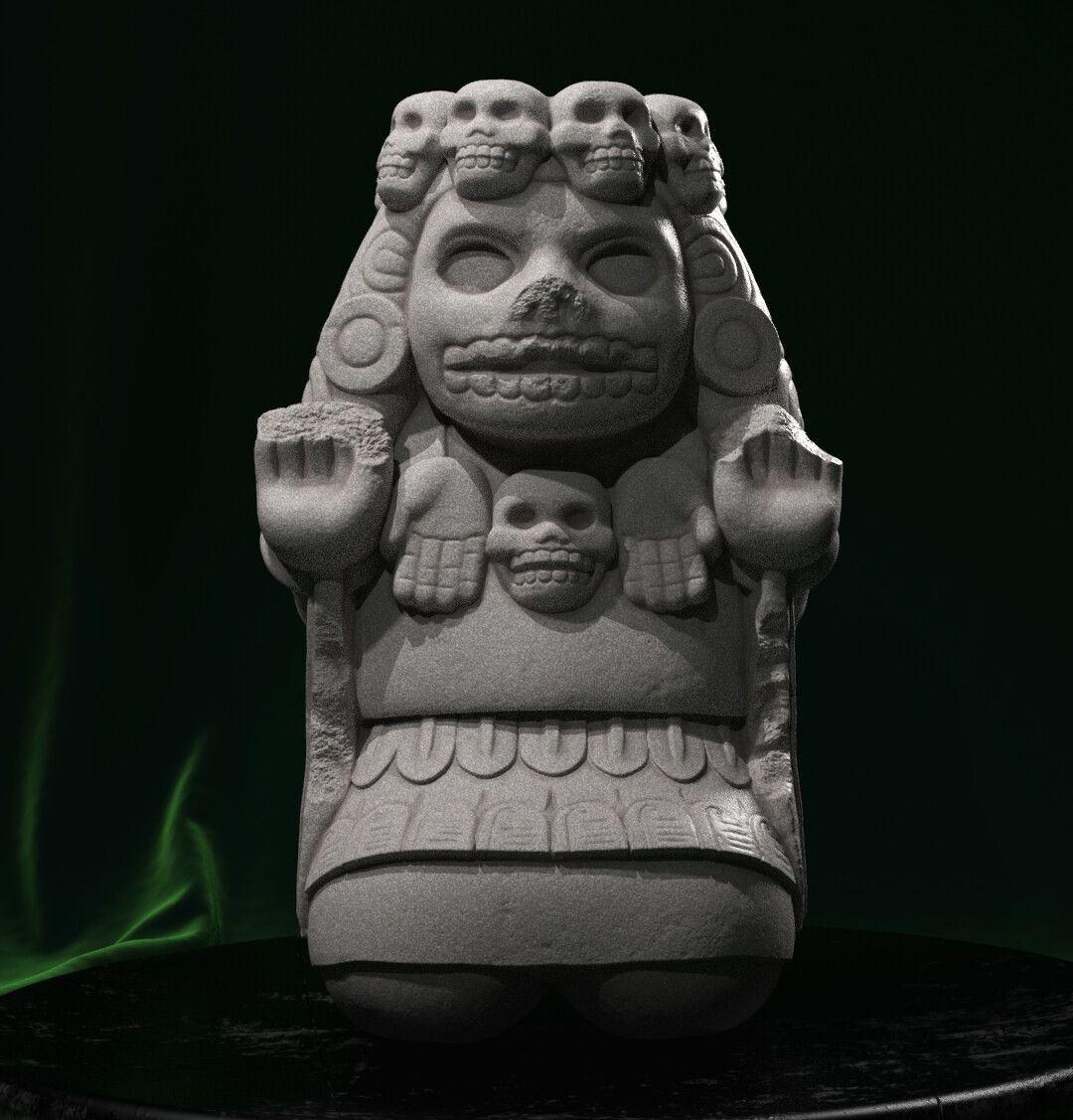
Podcast: Play in new window | Download

